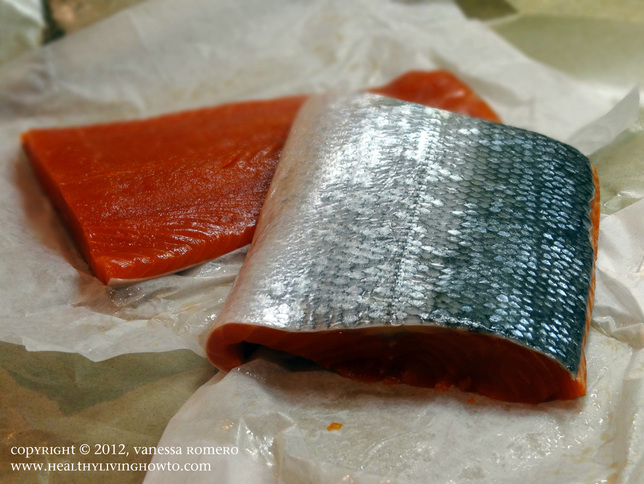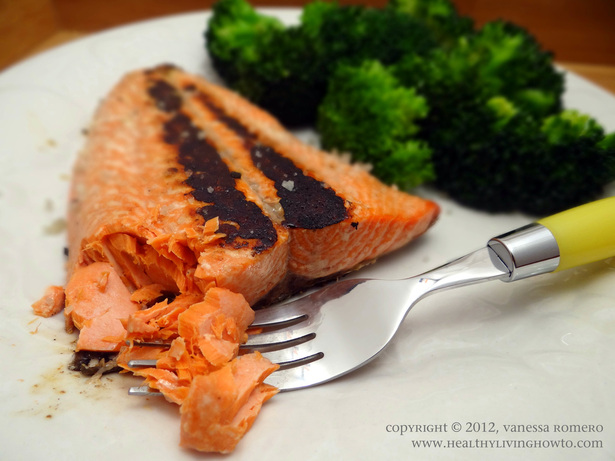I have to admit, up until last week, I did not like salmon (other than canned). Blasphemy, I know, how could I not like one of the world's healthiest foods. I really wanted to like salmon and have given it a fair try many times, but had long given up on it. That is until last week when Whole Foods had a one-day sale on Wild Alaskan Sockeye Salmon. The line at the seafood counter was long and I figured either the salmon is really thaaaaaat good or $7.99/lb. was too good of a deal to pass up. Either way, I found myself standing in line with the rest of 'em.
Once I got up to the counter I asked for one pound cut into two filets. If my attempt at salmon making was going to be a bust, I would only be out eight bucks. The gentleman helping me was quite surprised that that was all I wanted. I didn't want to wrinkle my nose and confess I didn't really care for salmon, so I told him I have fresh caught walleye waiting in the wings at home, which is the truth. I really do.
As soon as I got home I opened my favorite cookbook, How To Cook Everything, by Mark Bittman, and studied up. None of the recipes “sounded” too appealing to me, so off to Google I went. After much searching and recipe reading, I was about to give up when interesting enough, I came across a glowing recommendation for a Mark Bittman recipe. It promised to be the “Best Salmon Ever” and sounded as if the technique was a no-fail way of salmon making. All you needed was a non-stick skillet and coarse ground sea salt. Check and check, I had both.
What You Should Know About Non-Stick Cookware

We use our non-stick skillet daily for eggs and bacon and because of this, some time ago, decided to invest in a GreenPan. The GreenPan is a line of cookware made from ceramic with a non-stick coating that is manufactured without PTFE/PFOA and can withstand high heats, up to 850 °F without risk of toxins.
Super Simple Sockeye Salmon
Technique by Mark Bittman
3. After 5 minutes, flip the salmon over and cook for 1 minute.
4. Top with ghee or garlic butter along with a squeeze of fresh lemon juice and Celtic sea salt.
Notes: I turned the heat to a 9, with 10 being the highest and as you can see the salmon burned a little. Next time I will use an 8 which is a medium-high heat on my stove. With the heat as high as I cooked at, the skin was brown and crispy at about 4 minutes. Finally, be prepared, while the salmon has no fishy taste or smell, your kitchen will “stink”!!


